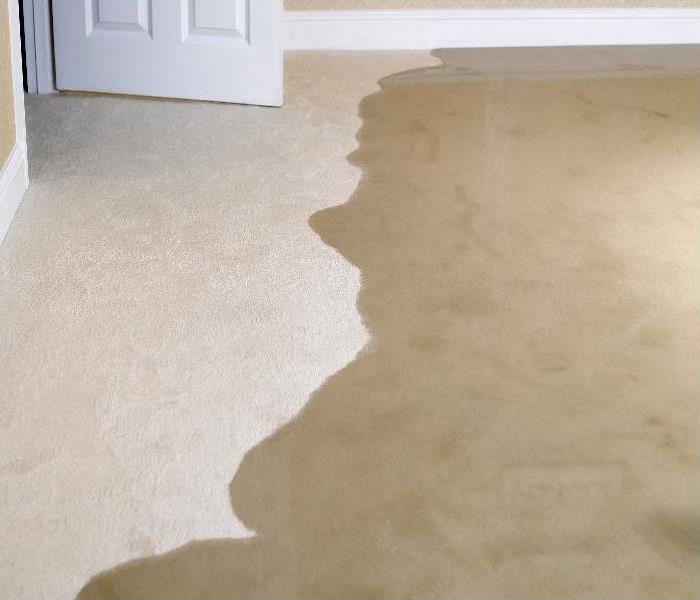My Area has a High Level of Flood Risk, who can Help in Great Neck?
5/24/2020 (Permalink)
Flood Damage Restoration In Great Neck
Wisconsin can see up to six inches of rainfall in a single day during some parts of the year. This massive amount of water can overload neighborhood drainage systems, water treatment towers, and Infrastructure. SERVPRO is a local flood recovery provider that can help to drain, clean, and restore your Great Neck home in an emergency.
How can I drain floodwaters from my home with no working sewer points?
Heavy, consistent rainfall can overload the sewer network on your block as well as your residential property. Flood damage in Great Neck as a result of road overflow can present new challenges to homeowners who are trying to rid their homes of standing water. When sewers overload standard sewer points like your sinks, bathrooms, and toilets stop functioning correctly. With many pumping systems relying on a working sewer point to discharge water, it can make draining the property tough. We can bring our truck-mounted wastewater tanks to your property with a capacity of up to one hundred and ten gallons. By attaching the discharge hose to the water tank, we can safely drain your home. Our trucks transport the floodwaters from your home to a wastewater facility for safe disposal.
How can I perform floodwater restoration without access to a clean water supply?
Water treatment facilities are at a high risk of flooding. The result is that neighborhood access to clean water is no longer available, and, in severe cases, your water supply pipes can transport unclean water into your home via the plumbing network. Floodwater restoration involves significant amounts of cleaning to return the home to its original state. After pumping water out of the property, it is not uncommon for homeowners to find their property and possessions coated in silts, debris, mud, raw sewage, or other contaminants. Our technicians can use pressure washers on the exterior of the building alongside truck-mounted cleaning wands for the interior. Thorough disinfecting of the affected area is essential to ensuring your home returns to a sanitary state.
What is the role of an insurance adjuster during flood restoration?
An insurance adjuster inspects the building materials and contents of your home following a flood. The report that they produce passes to a SERVPRO crew chief and helps us to design the restoration procedure. You can list the contents of your home to an insurance adjuster as well as the estimated costs as these form your insurance claim. Our crew chiefs work to a restore over replace mentality when working with an insurance adjuster, which can reduce the time-frame of your property restoration and help you to salvage valuable or sentimental items. Usually, in flood restoration, a technician accompanies a crew chief. We can communicate with you throughout the process to ensure that you stay in the loop regarding restoration in your home. Communication can help to ensure that the restoration does not inconvenience you unnecessarily- this may include prioritizing kitchens or bathrooms so that you can use your property while the restoration is underway.
What should I do if I see potential hazards in the property?
• identify the issue
• communicate to ensure that everyone in the area is aware
• Document the issue
• See what measures can be taken to control the hazard
• perform the necessary control measures
If you spot potential hazards in your property, you can communicate them directly to the crew chief on-site who can then make sure everyone is aware. Controlling hazards can require expertise as well as experience of working on flood restoration projects. If you suspect a hazard of any severity, it is essential to communicate. Some hazards may seem benign but could cause serious injury. Crew chief has the experience to implement proper control methods for potential hazards in the property. These control measures can help to ensure that everyone on the property remains safe.
What equipment do I need to restore my home after flooding?
• Personal Protective Equipment (PPE.)Heavy-duty boots, gloves as well as respiration equipment to prevent inhaling airborne contaminants.
• Water pumps and extractors to remove excess water from the home
• Pressure washing equipment as well as shovels to loosen and remove mud from home
• Cleaning products including solvents and disinfectants
• Construction equipment for removal and reinstallation of contaminated materials in the building.
• Drying and dehumidification equipment
How can I reduce the flood odors in my home?
Odors are noticeable when there is high humidity or the presence of moisture. In some cases, the presence of odors reduces once the cleaning and drying of a flooded property are complete. However, SERVPRO offer full-house fumigation as well as air filtration to restore your indoor air quality to a preloss condition. They are using ultra-low volume (ULV) foggers to fumigate a room or entire property efficiently and can deploy venting fans to exchange indoor and outdoor air. Our comprehensive approach to odor control makes sure that your property feels “Like it never even happened,” after restoration.
If heavy rainfall damages your property, contact SERVPRO of Great Neck / Port Washington at (516) 767-9600.




 24/7 Emergency Service
24/7 Emergency Service
